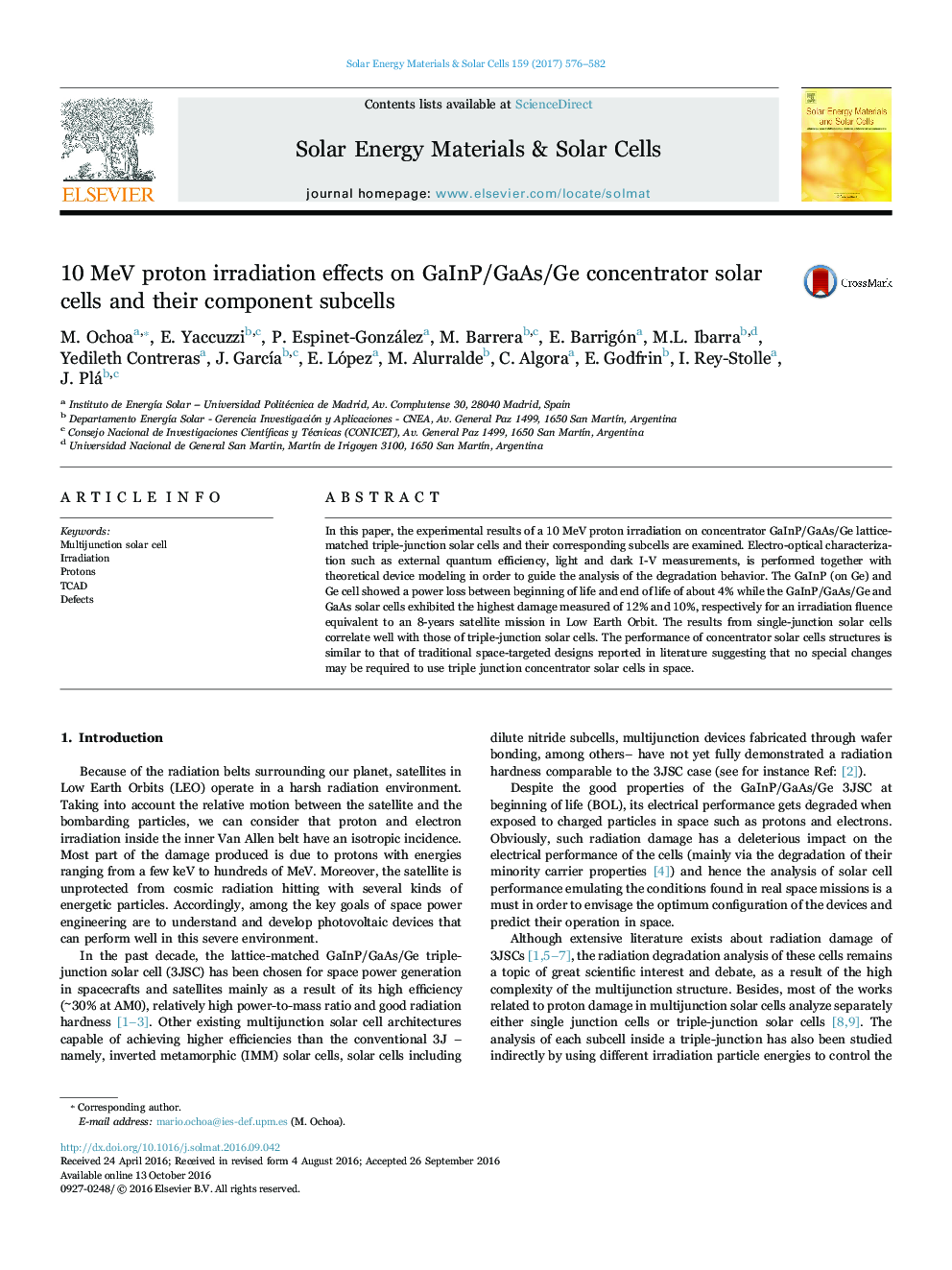| Article ID | Journal | Published Year | Pages | File Type |
|---|---|---|---|---|
| 6457597 | Solar Energy Materials and Solar Cells | 2017 | 7 Pages |
â¢Pmax reduces 4% from BOL to EOL in GaInP/Ge and Ge and 10% for GaAs solar cells.â¢The 3J GaInP/GaAs/Ge cell exhibited a 12% power loss between BOL and EOL.â¢TCAD modeling is used to explain the losses in GaAs solar cells (most damaged cell).â¢The results from 1J solar cells correlate well with those of 3J solar cells.
In this paper, the experimental results of a 10Â MeV proton irradiation on concentrator GaInP/GaAs/Ge lattice-matched triple-junction solar cells and their corresponding subcells are examined. Electro-optical characterization such as external quantum efficiency, light and dark I-V measurements, is performed together with theoretical device modeling in order to guide the analysis of the degradation behavior. The GaInP (on Ge) and Ge cell showed a power loss between beginning of life and end of life of about 4% while the GaInP/GaAs/Ge and GaAs solar cells exhibited the highest damage measured of 12% and 10%, respectively for an irradiation fluence equivalent to an 8-years satellite mission in Low Earth Orbit. The results from single-junction solar cells correlate well with those of triple-junction solar cells. The performance of concentrator solar cells structures is similar to that of traditional space-targeted designs reported in literature suggesting that no special changes may be required to use triple junction concentrator solar cells in space.
Graphical abstractThe experimental results of a 10Â MeV proton irradiation on concentrator GaInP/GaAs/Ge lattice-matched triple-junction solar cells and their corresponding component subcells are examined. The analysis has been performed by means of in-situ and ex-situ electrical and optical characterization such as external quantum efficiency, dark and light I-V curves, deep-transient spectroscopy, among others. The results exhibit that GaInP (on Ge) and Ge cell showed an absolute power loss between beginning of life and end of life of about 4% while the GaInP/GaAs/Ge and GaAs solar cells exhibited the highest damage measured of 12% and 10%, respectively for an irradiation fluence equivalent to an 8-years satellite mission in low Earth orbit. A single-defect model can reproduce the degradation damage observed on bulk and perimeter of GaAs solar cells for the accumulated fluences used here. The results from single-junction solar cells correlate well with those of triple-junction solar cells.Download high-res image (306KB)Download full-size image
